Contents
Yellowstone National Park | Introduction
Yellowstone National Park is the world's first national park, established as early as 1872. Located in the western United States, it spans across Wyoming, Montana, and Idaho. The park features spectacular and diverse landscapes, known for its rich geothermal wonders. The most famous attractions include the regularly erupting Old Faithful Geyser and the colorful Grand Prismatic Spring. In addition to its stunning natural scenery, Yellowstone is home to awe-inspiring wildlife, where you can spot freely roaming American bison, grizzly bears, elk, gray wolves, and more.
Yellowstone is divided into five main areas, each offering its own unique features. The Old Faithful Area is known for having the highest concentration of geysers, including the iconic Old Faithful Geyser and numerous geothermal trails. The Norris Geyser Basin is the park's oldest and most geothermally active region. Yellowstone Lake is the largest alpine lake in North America. Mammoth Hot Springs features unique travertine terraces with a rich historical backdrop. The Grand Canyon of the Yellowstone is a vibrant and majestic canyon, while the Tower-Roosevelt Area boasts spectacular waterfalls and is near one of the best wildlife viewing spots, Lamar Valley.
For first-time visitors, summer is the ideal time to visit. The weather is pleasant, and all major attractions are fully open, allowing you to experience the park's pristine natural beauty. In winter or other seasons, some roads may be closed due to snow, but Yellowstone covered in snow offers a different kind of grandeur.

Yellowstone National Park | Trip Planning
Yellowstone National Park is vast, so careful planning is necessary to minimize travel time. A minimum of 4-day trip is recommended to cover most major attractions, but ideally, you should plan for at least 5 days to have enough time to visit all areas. Don’t schedule your itinerary too tightly because Yellowstone offers many opportunities to encounter wildlife, and it would be a shame to miss the chance to stop and observe.
Here’s a sample 4-day itinerary, focusing on one area each day to minimize driving and give you time to savor the natural beauty at every corner:
- Day 1: Old Faithful Area
After entering Yellowstone, head straight to the most iconic area, the Old Faithful region. Start with the main attraction, Old Faithful Geyser, which erupts every 90 minutes or so. Then, explore the Upper Geyser Basin trails nearby, where many other must-see geothermal features are located. Take some time to visit the Old Faithful Visitor Center to learn more about the park's geothermal activity and explore other geothermal trails in the area - Day 2: Yellowstone Lake Area
Yellowstone Lake is the largest alpine lake in North America. Whether you drive around the lake or take a walk, you'll be immersed in the serene beauty of the water and surrounding mountains. Nearby geothermal sites like West Thumb Geyser Basin and Mud Volcano are worth visiting. In the evening, head to Hayden Valley, one of the best wildlife viewing spots in the park, where you're likely to spot bison or elk, especially at dusk. - Day 3: Mammoth Hot Springs Area and Tower-Roosevelt Area.
In the morning, visit Mammoth Hot Springs to admire the limestone terraces, a striking natural wonder shaped by geothermal forces. In the afternoon, head to the Tower-Roosevelt Area to view waterfalls and historic landmarks. This is one of the oldest regions of the park, and in the evening, continue east to Lamar Valley to see large herds of wildlife. - Day 4: Canyon Village
The highlight of this day is the famous Grand Canyon of the Yellowstone. The views from Artist Point are absolutely breathtaking and will have you lingering for a while.
Given the vastness of Yellowstone, if you can cover all the areas above in four days, that’s a good pace. This itinerary doesn't include the Norris Geyser Basin, which is the oldest geothermal area in the park, and one day in the Old Faithful area only covers the main trails. If you have more time, it’s recommended to add at least one more day to visit these areas. Additionally, if time permits, you might consider adding a trip to the adjacent Grand Teton National Park to the south of Yellowstone.


![U.S. National Parks] Yellowstone National Park 4 days tour full guide 4 yellowstone national park,yellowstone national park 3](https://blog.travelhackfun.com/wp-content/uploads/2024/09/yellowstone-784.jpeg)
- Hotel search: Agoda
- Activities & tickets: KKday / Klook / TripAdvisor
- Travel credit cards (US only): My card picks + beginner tips
Yellowstone National Park | Transportation
Getting to Yellowstone National Park
Most visitors fly into nearby cities like Jackson, Wyoming; Bozeman, Montana; or Idaho Falls, Idaho. These cities all have international airports and are 3-5 hours' drive from the park. Jackson is the closest to Yellowstone's south entrance, making it a convenient option for visitors coming from the western U.S., while Bozeman is a top choice for those arriving from the north. After arriving in one of these cities, renting a car is the most convenient way to get to the park.
If you'd rather not drive yourself, consider joining a tour. International travelers can fly into Salt Lake City, which offers more flight options.
Yellowstone Tours from Salt Lake City
Yellowstone Tours from Jackson
Inside the Park
The park is enormous, and driving allows you the greatest flexibility, enabling you to stop whenever you want for photos or wildlife viewing. Yellowstone has five main entrances, and depending on your itinerary, you can enter the park from the west, northwest, north, east, or south gates. If you visit during summer, most entrances will be open, but be aware that some roads and entrances may be closed during winter due to heavy snowfall. No matter the season, road conditions in the park may be delayed by animals crossing or bad weather, so plan for flexibility in your schedule.
If you'd prefer not to drive, there are several tour companies offering bus tours inside the park, ideal for those who don't enjoy driving or want to learn more about Yellowstone's history. However, these tours typically cover only the major attractions, with less flexibility.
Yellowstone National Park | Lodging
Inside The Park
Since Yellowstone is vast, it’s best to stay near the areas you want to explore to save time and make daily trips easier. There are many accommodation options within the park, but it's highly recommended to book early. We’ll cover accommodation details for each area in future articles, but here’s a general overview for now.
If you don’t plan on changing lodges for each area, it's best to stay between the Old Faithful area and the Canyon Village area.
The Old Faithful area has the most attractions in the park, and spending two days here is well worth it. For a classic national park lodging experience, the Old Faithful Inn is an excellent choice. Located right next to Old Faithful Geyser, this historic lodge offers both charm and convenience, allowing you to watch the geyser erupt from the comfort of your room.
If you don’t like switching lodges and prefer more modern accommodations, the Canyon Village area lodges or campsites are the best option. They’re located within two hours' drive of most areas in the park.
Off-Site Lodging
If you’re looking to save on costs, the nearby town of West Yellowstone offers the most convenient options outside the park, with more affordable prices. However, it requires more driving time to get in and out of the park each day.
Looking for a stay in West Yellowstone?
Yellowstone National Park | Area Attractions
Yellowstone’s attractions are spread across various regions. Below is a brief overview of the main areas and their representative sites to give you a basic understanding of each place. We will be publishing more detailed articles in the future to provide deeper insights into each area's highlights and travel recommendations.
Old Faithful Area
This area is undoubtedly the most famous part of Yellowstone, represented by the iconic Old Faithful Geyser. Old Faithful erupts approximately every 90 minutes, sending water over 40 meters into the air. In addition to Old Faithful, the Castle Geyser and Morning Glory Pool are also must-see geothermal wonders, with vibrant colors and incredible geothermal activity. However, don’t think the Old Faithful area is limited to just these attractions. The number of geysers here is overwhelming, and there are numerous easy-to-walk geyser trails, making it easy to spend a whole day exploring.
The Old Faithful Geyser area is rich in content, and I have a dedicated article about it in this post.
Time Needed: 1-2 days, depending on your interest in geothermal features.
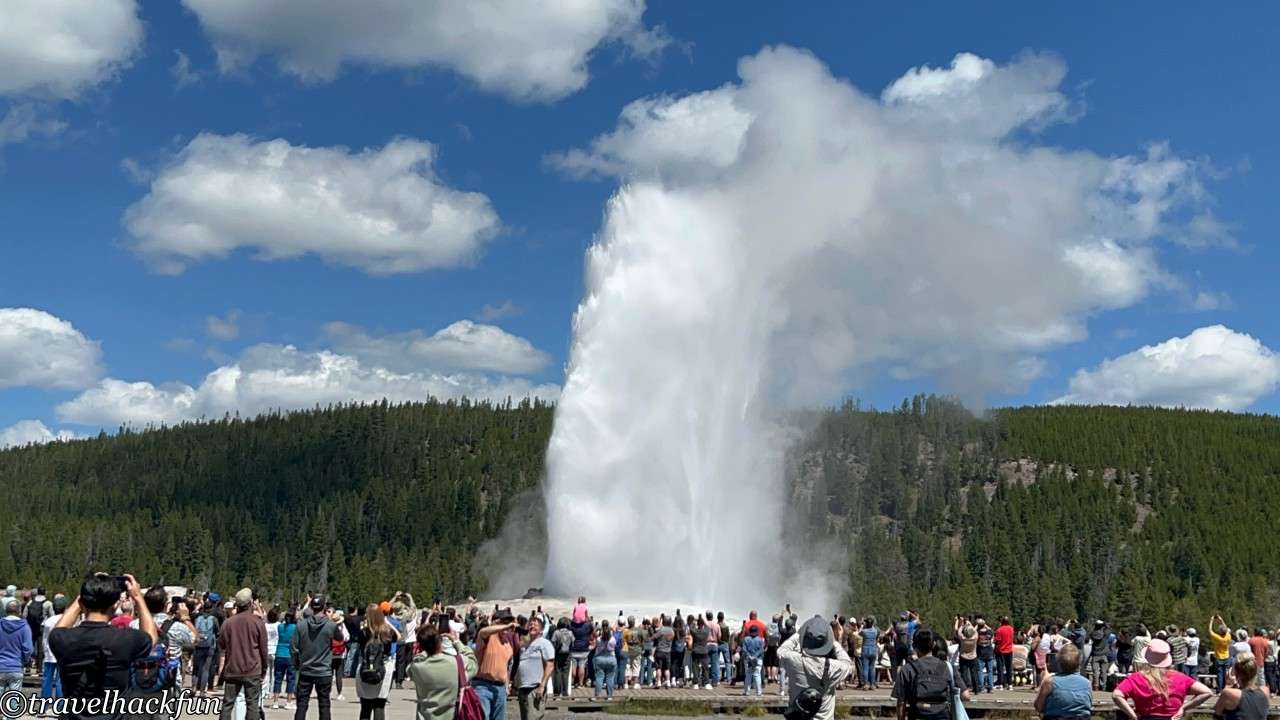
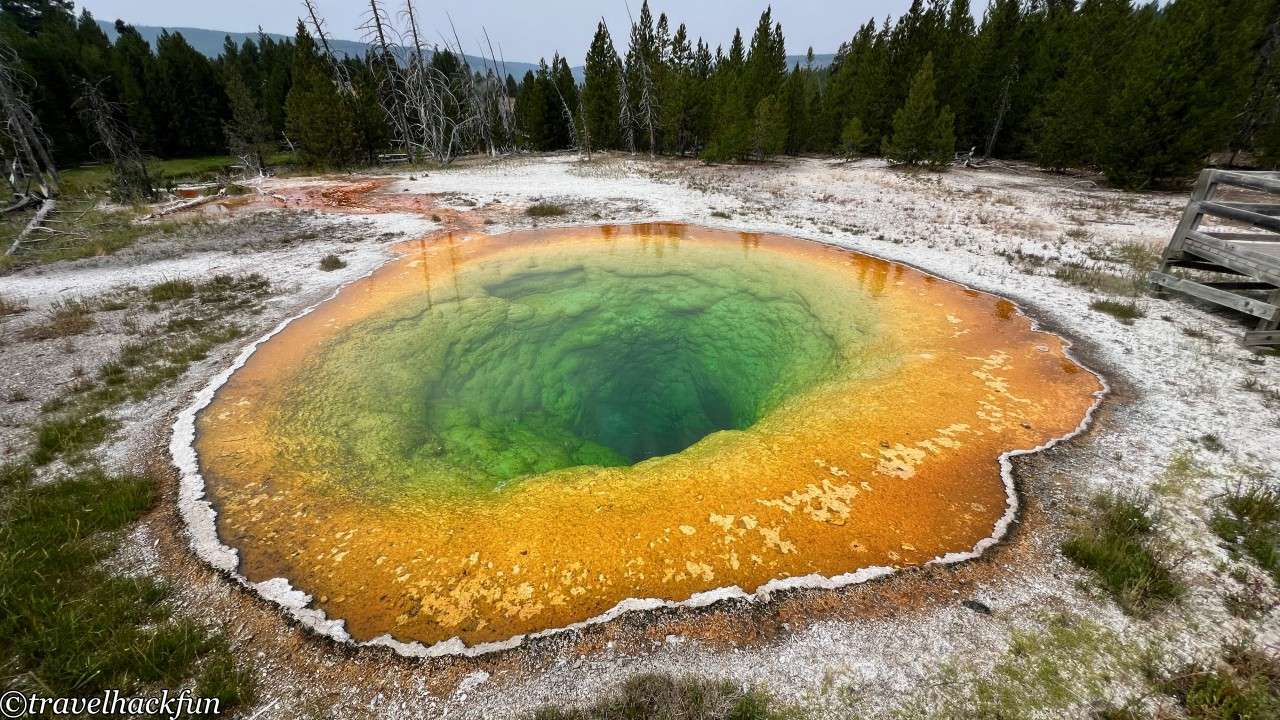
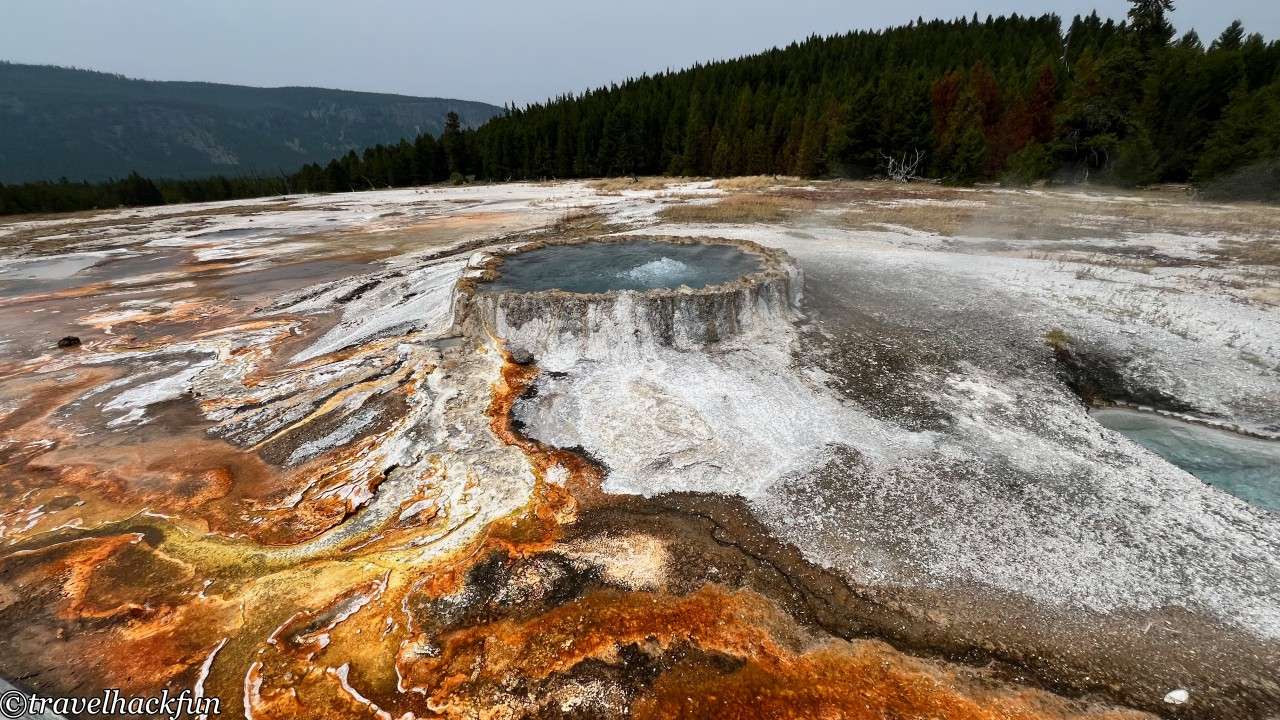

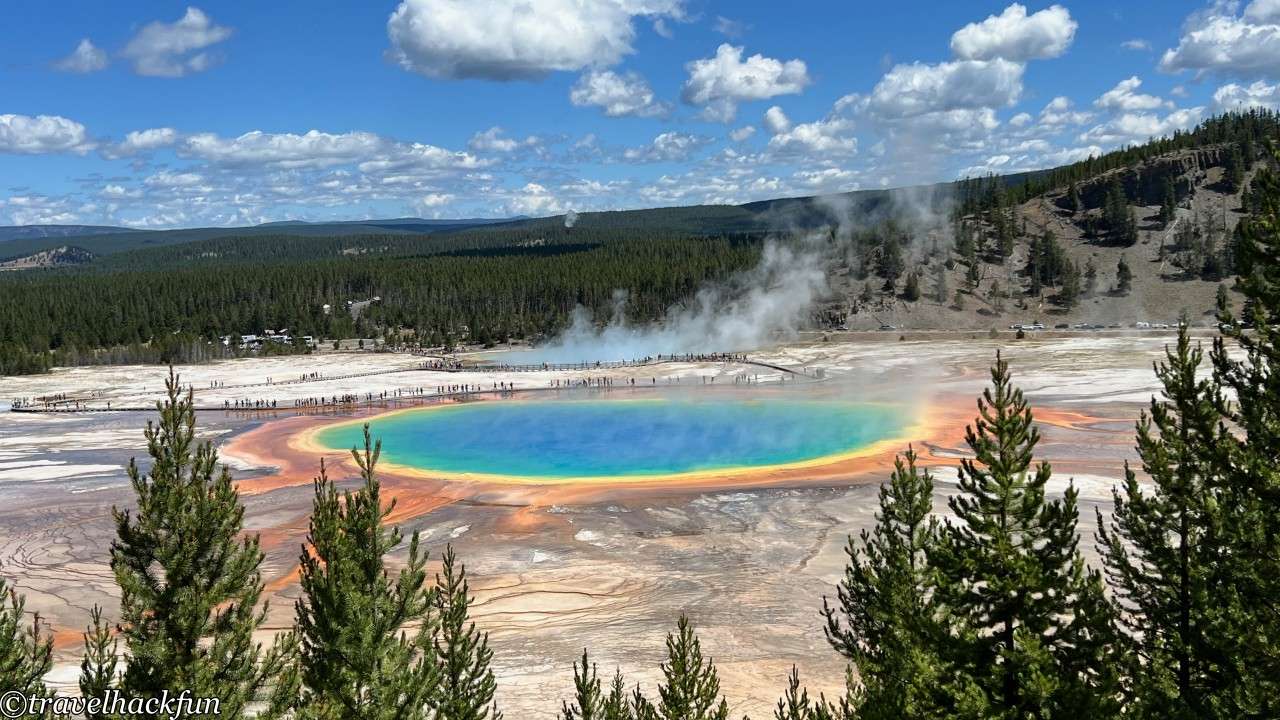
Norris Geyser Basin Area
Norris Geyser Basin is the oldest and most active geothermal area in Yellowstone. The geothermal activity here is intense, and the water in the springs and geysers is usually hotter than in the Old Faithful area. Mud pots and acidic springs form a diverse landscape, making this area full of unpredictable surprises. Geysers and hot springs come in a variety of colors and shapes, almost as if they belong to another planet. The most famous attraction is Steamboat Geyser, the tallest geyser in the world, with eruptions reaching over 90 meters high. Though its eruptions are less predictable than Old Faithful, witnessing one is a once-in-a-lifetime experience.
The Norris Geyser Basin is rich in content, and I have a dedicated article about it in this post.
Time Needed: 2-3 hours, recommended to walk slowly and appreciate the variety of geothermal wonders.

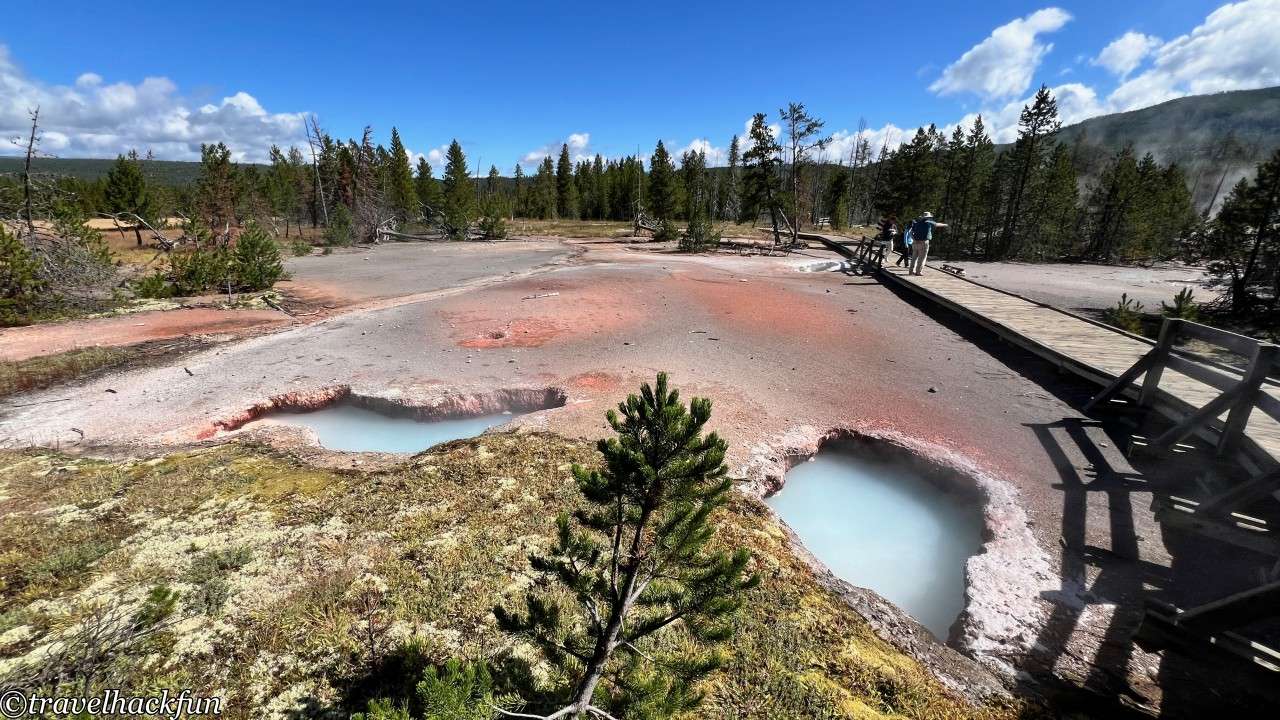
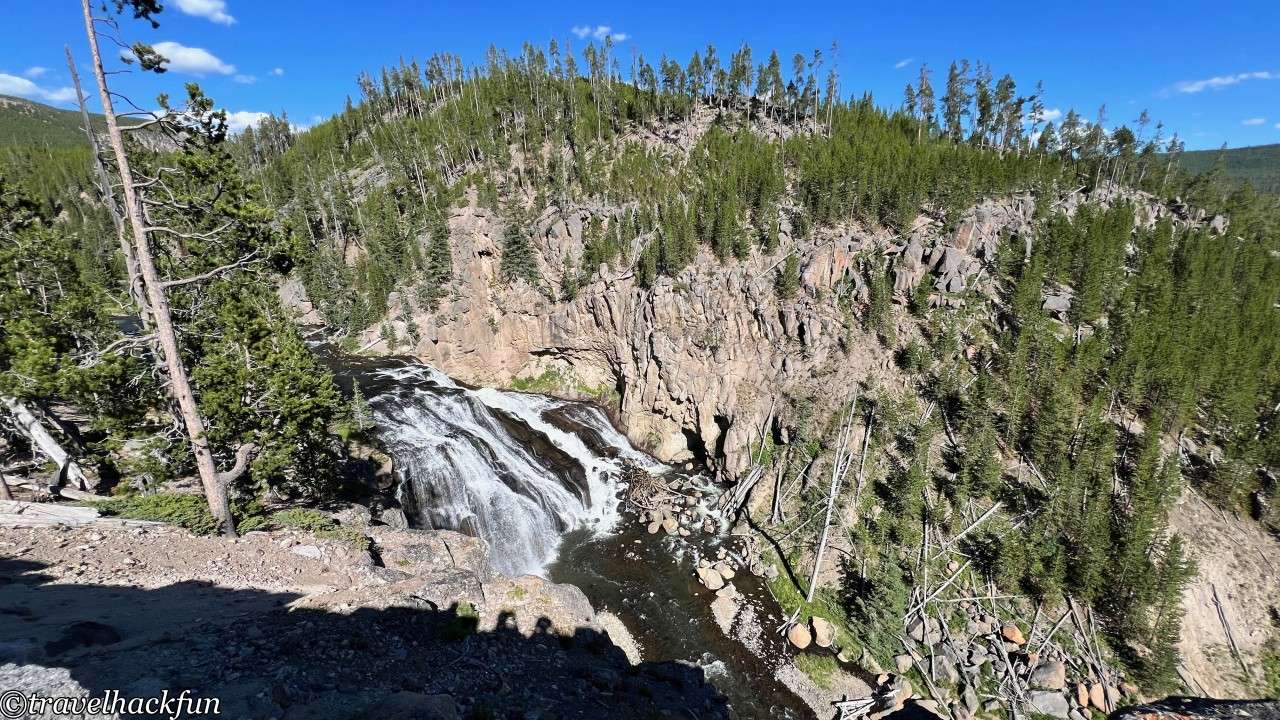
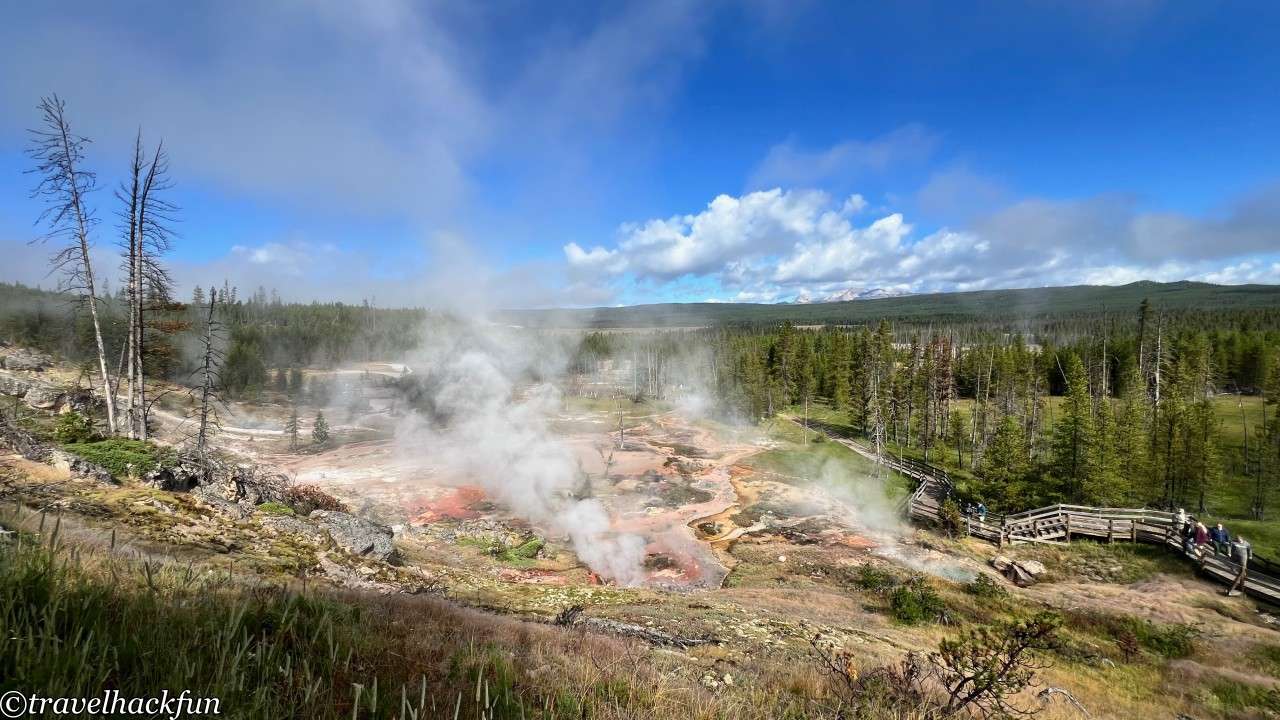
Canyon Village
The Grand Canyon of the Yellowstone is one of the most popular and awe-inspiring natural attractions in the park, besides the geothermal features. Here, the Yellowstone River has carved out a gorge with vibrant colors and layered rock formations. The view from Artist Point is a must-see, offering picture-perfect scenery, especially at sunset when the colors are most vivid. The nearby Hayden Valley is rich in wildlife and is best visited early in the morning or at dusk.
The Canyon Village area is rich in content, and I have a dedicated article about it in this post.
Suggested tour time: Time Needed: Half a day to a full day.
![U.S. National Parks] Yellowstone National Park 4 Days Tour Guide 14 yellowstone national park, yellowstone national park 13](https://blog.travelhackfun.com/wp-content/uploads/2024/09/yellowstone-829.jpeg)
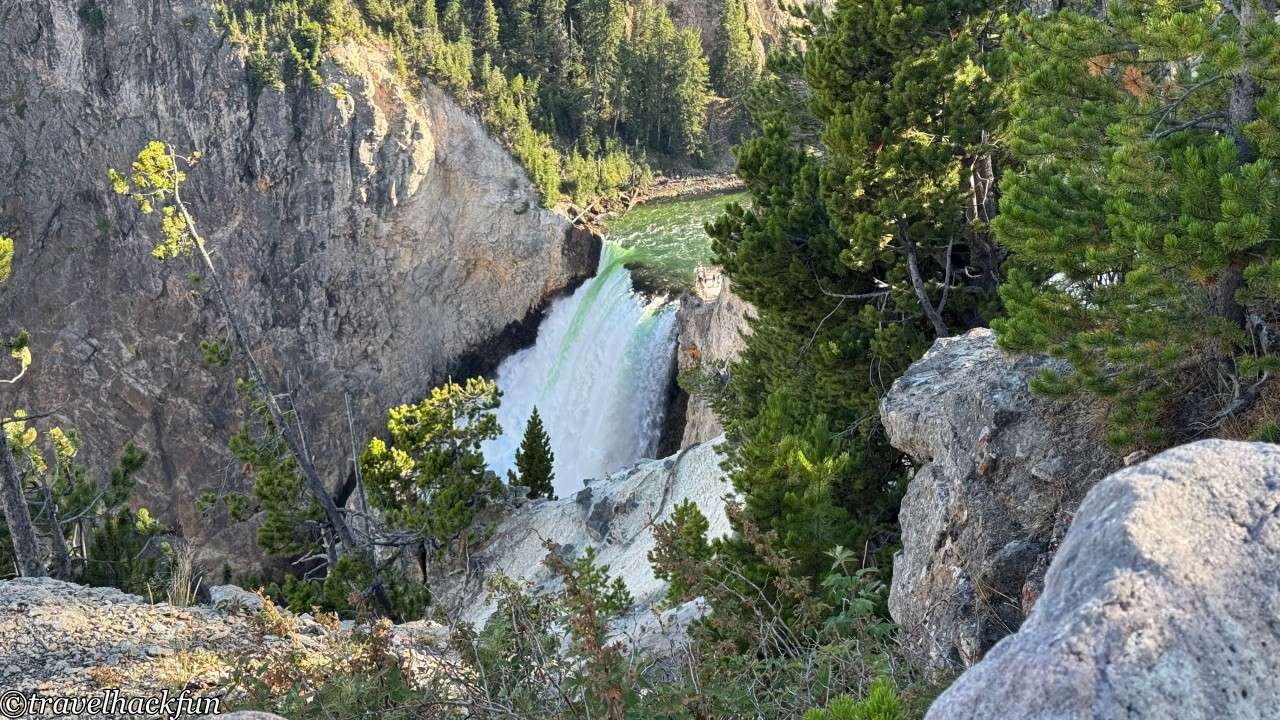
Yellowstone Lake Area
Yellowstone Lake is the largest alpine lake in North America. Its peaceful waters and distant mountain views create a stunning natural landscape. You can take a walk along the lake’s shores to enjoy the tranquility of nature or participate in boating activities for a closer interaction with the lake. The surrounding scenery is breathtaking and serene. West Thumb Geyser Basin, located on the southwestern shore, is a small but beautiful geothermal area, with many geysers along the lake. The iconic Fishing Cone is a must-see, once used by tourists to cook their freshly caught fish in the geyser’s boiling water. To the northwest lies the Mud Volcano area, which differs from other geyser areas with its boiling mud pots and bubbling mud pools.
The Yellowstone Lake area is rich in content, and I have a dedicated article about it in this post.
Suggested tour time: Time Needed: Half a day to a full day.
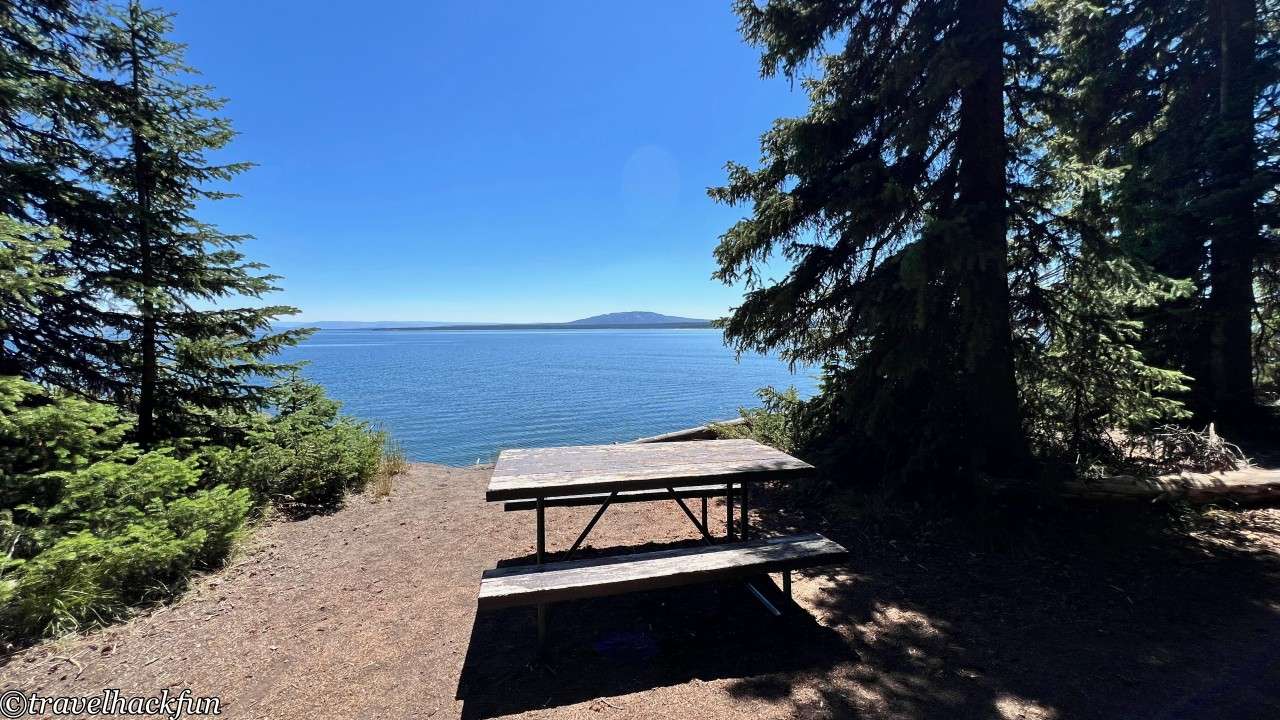
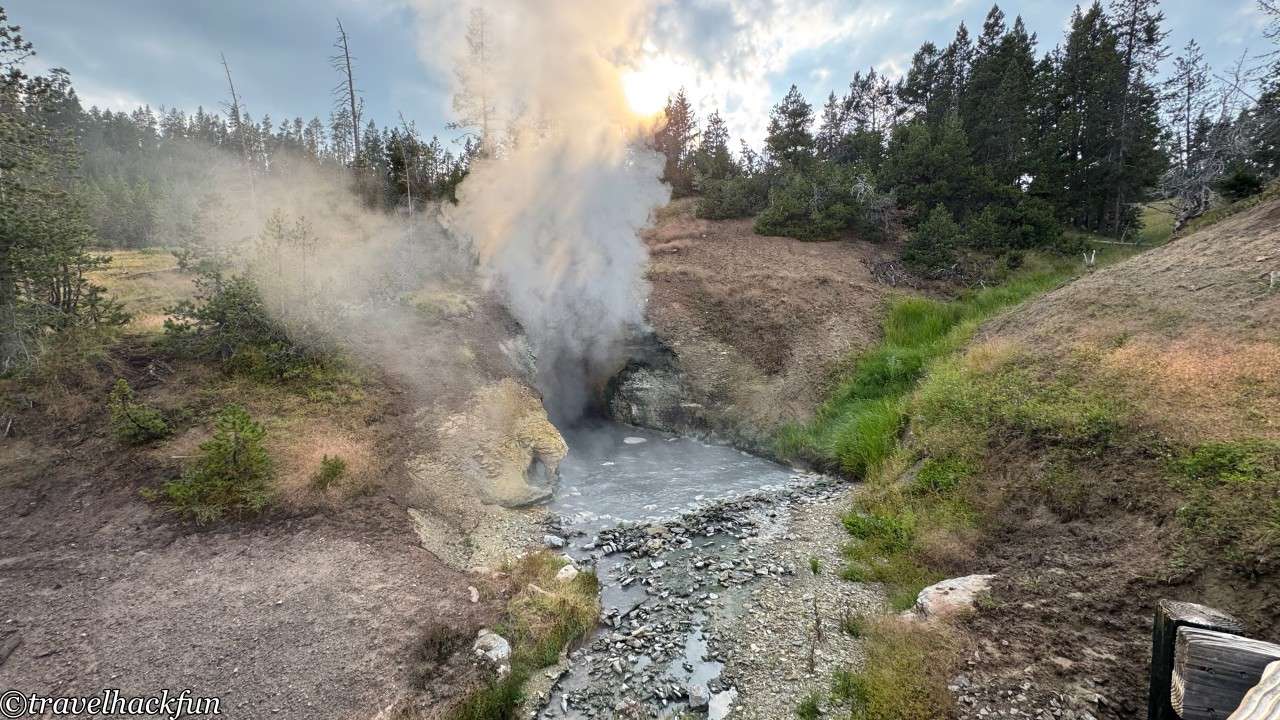
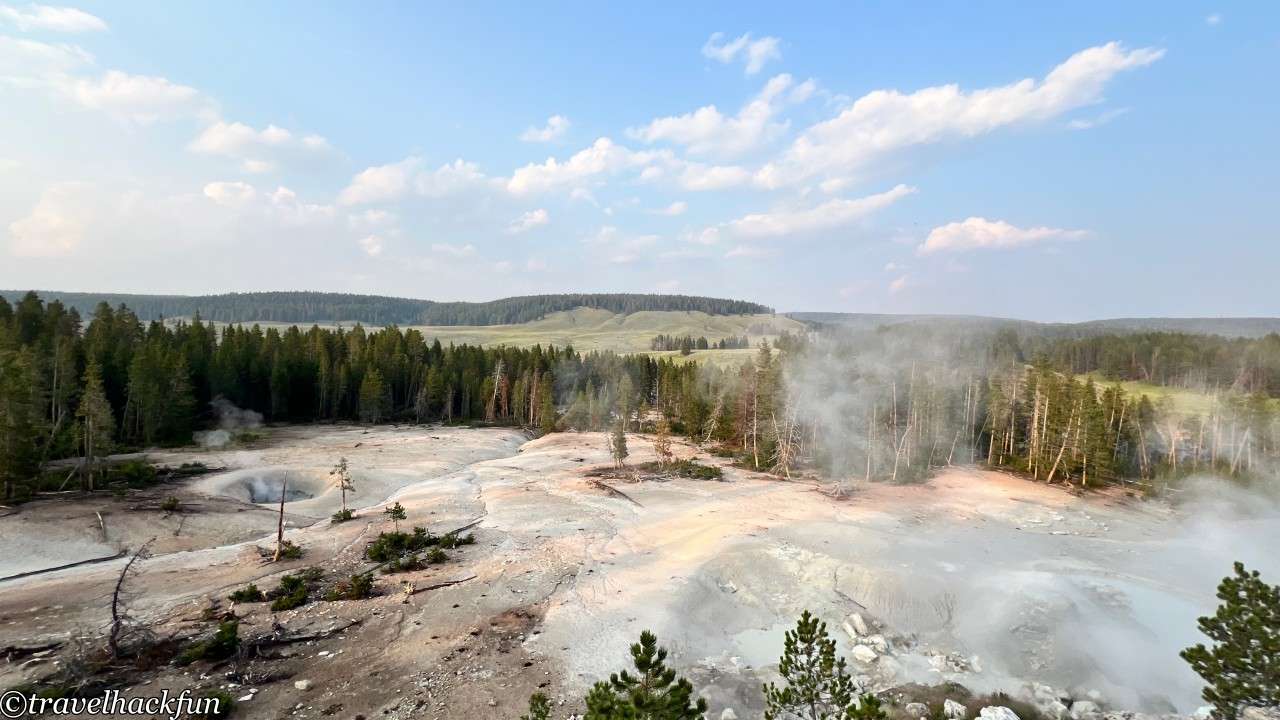

Mammoth Hot Springs Area
Mammoth Hot Springs is famous for its terrace-like limestone formations. These stunning geothermal features appear as natural sculptures, where layers of limestone are deposited by the hot springs over time, creating colorful and visually striking landscapes. Visitors can walk along boardwalks to view these terraces up close and explore the nearby historic buildings and museums.
The Roosevelt Tower area is rich in content, and I have a dedicated article about it in this post.
Time Needed: Half a day.

![U.S. National Parks] Yellowstone National Park 4 Days Tour Guide 21 yellowstone national park, yellowstone national park 20](https://blog.travelhackfun.com/wp-content/uploads/2024/09/yellowstone-254.jpeg)
![U.S. National Parks] Yellowstone National Park 4 Days Tour Guide 22 yellowstone national park, yellowstone national park 21](https://blog.travelhackfun.com/wp-content/uploads/2024/09/yellowstone-176.jpeg)
Tower-Roosevelt Area
The Tower-Roosevelt Area is a paradise for history buffs, offering both beautiful natural scenery and rich historical relics. Tower Falls is the area’s landmark waterfall, with a height of about 40 meters. Although smaller than other waterfalls in the park, the surrounding scenery and peaceful atmosphere make it feel like a hidden gem. This area is also near Lamar Valley, a vast grassland perfect for spotting gray wolves and American bison.
The Roosevelt Towers area is very informative, and I've been in themy other post hereThe article is introduced in the article.
Time Needed: Half a day.
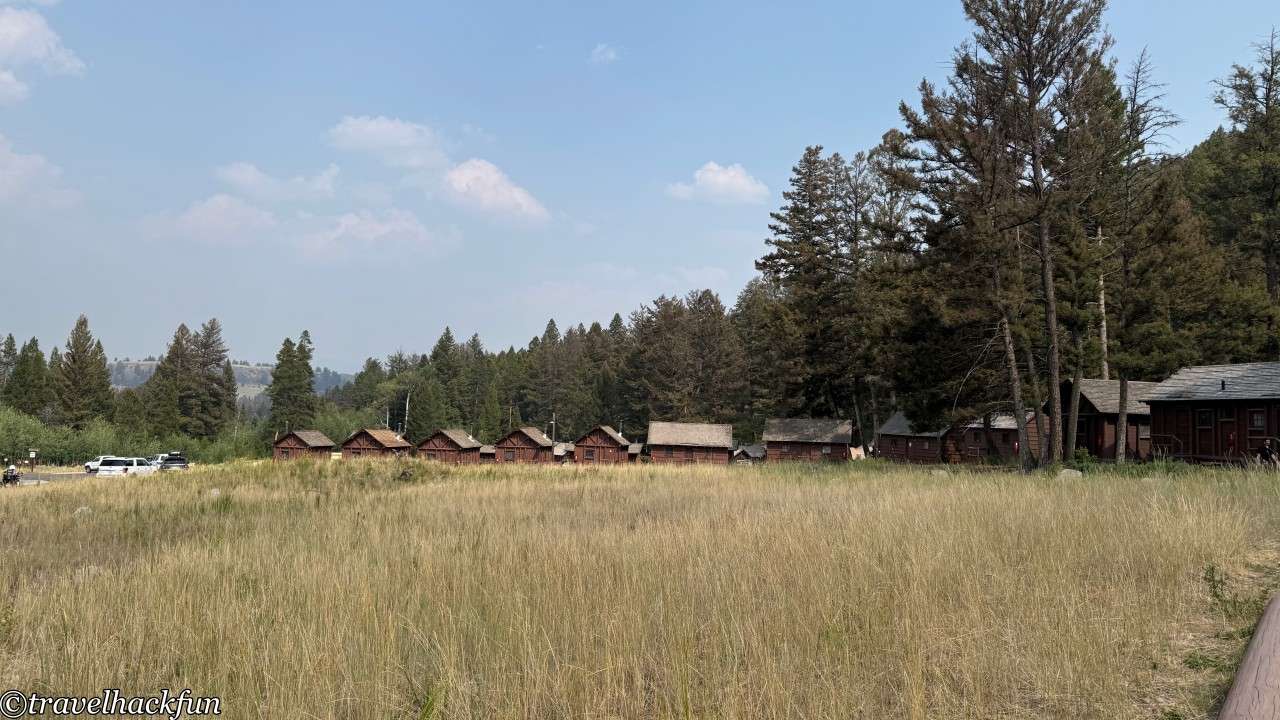
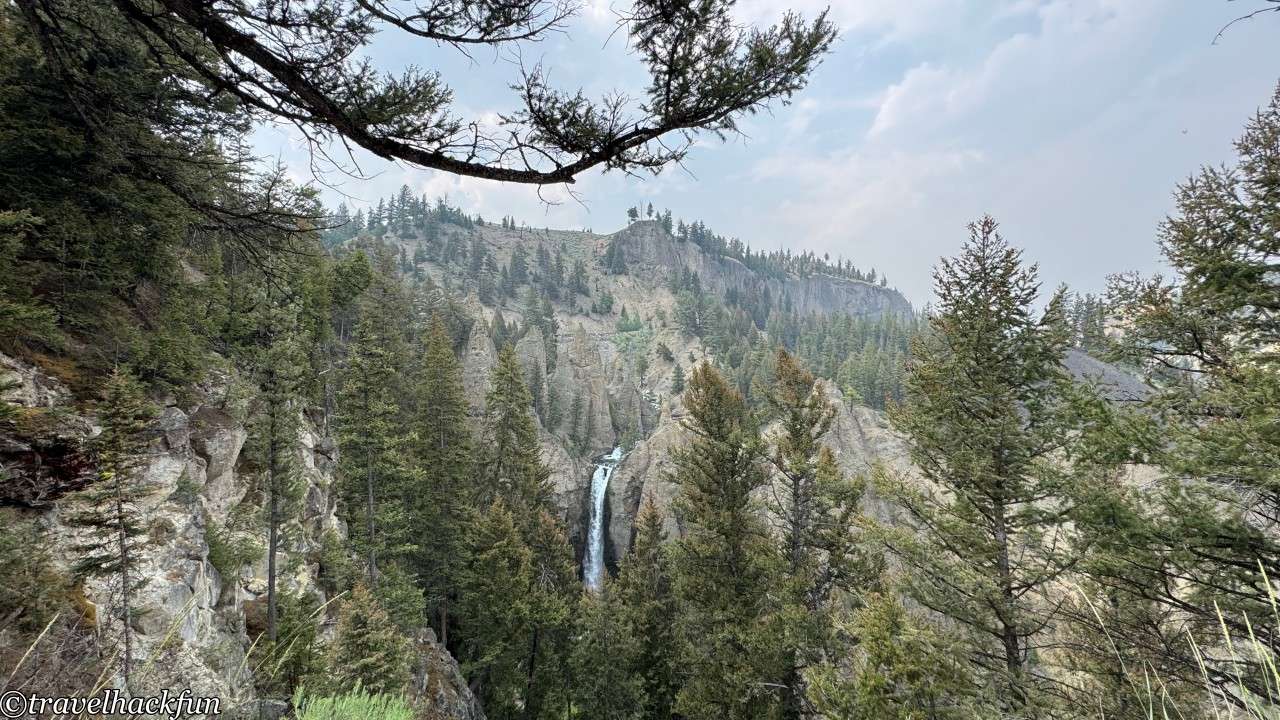

☕ Enjoying my travel notes?
You can Buy me a coffee to support what I do 🙌
Further reading
- More U.S. National Parks
- More Wyoming posts